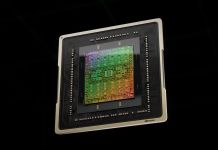Albatron har nu lanserat sin nya multi-touch skärm som gör det möjligt att navigera sin dator med flera rörelse samtidigt. Men Albatrons Optical Touch Monitor (OTM) använder en något ovanligare teknik än sina konkurrenter. Istället för att integrera fysisk pekteknik framför bildpanelen, som man kort och gott trycker på, använder sig OTM av infrarött ljus. Ett ljus som helt enkelt känner av var och hur man närmar sig skärmen, vilket gör att det inte krävs någon fysisk kontakt för att navigeringen ska fungera. OTM tekniken har flera fördelar mot så kallade vanliga touchtekniker så det ska bli intressant att följa Albatrons framsteg.
Mer information finns i Albatrons pressmeddelande;
Optical Touch brings huge advantages compared to traditional touch monitors.
Albatron Optical Touch Monitor on course with Multi-Touch Mania!
Albatron Technology has announced its new Optical Touch Monitor (OTM), on course with a new era of Multi Touch Panel monitors. At NVISION 08, multi-touch panels were lauded by Jen-Hsun Huang in his keynote speech as being one of the most exciting emerging technologies. Multi-Touch was demonstrated last year by Bill Gates using beta versions of Windows 7. And who could forget Tom Cruise dragging, wiping, and tapping away in Spielbergs Sci-Fi classic, Minority Report. Introduced as a development version at the most recent Computex, the Albatron OTM has since been fine-tuned with improved technology to bolster performance and prepare it for the consumer market.
How is an Optical Touch Monitor different from traditional touch monitors?
The difference between an Optical Touch Panel and a traditional touch panel lie in the sensing material, that make up the screen itself. In a traditional touch panel monitor (capacitive, resistance types), sensing technology is embedded into every square inch of the screen. In Albatrons OTM, there is absolutely NO sensing technology in the screen per-se; movement is all tracked with infrared light, optical sensors and reflection bars surrounding the screen on the edges of the frame.
Optical Monitor Advantages versus Traditional Touch Monitors
This new optical technology offers many advantages to traditional capacitive and resistive touch monitors.
- The OTM requires no recalibration as opposed to traditional touch monitors that typically require recalibration after extended use.
- OTM is more cost effective. When manufacturing larger and larger traditional touch screens, there is a proportional increase in the cost of sensing material, since the technology is embedded into the screen . As mentioned, there is no sensing material in an OTM screen itself, so increasing the size of the monitor does not result in a proportional increase in the cost of sensing material (there is only a marginal increase in general costs due to materials needed for producing a larger product).
- OTM monitors are more durable. In a traditional touch monitor, wear and tear from tapping, prodding, scraping, dragging can damage the sensing material on the screen. Since the sensing material is not embedded into the screen on an OTM, it is impossible to damage the sensing capabilities through normal use.
- OTM has multi-touch capabilities (manipulating the screen with more than one finger). Traditional touch panels are incapable of multi-touch capabilities.
- OTM can grow to unlimited size. Because of the simple structure of OTM technology, these monitors can theoretically be built as large as you need. Traditional touch monitors, however, are limited to 15 or less.
- OTM display is more brilliant than traditional touch monitors because the screen itself is not obstructed with embedded sensing hardware.
Touch Panel Applications- As far as your imagination can reach.
Aside from obvious educational opportunities for children and enhanced multimedia experience, the Touch Panel possibilities are endless. Already, weve seen awesome multi-touch adaptations by Google-Earth, YouTube and other web applications. 3D Medical imaging display, digital musical instruments, art (sculpture and painting), gaming, hand writing applications, advertising all have great potential for large screen touch panels.
OTM specifications
The first shipments of the OTM monitor will have a 21.5 screen with FULL HD capabilities. Performance reaches 120 points/second refresh rates, which is higher than most touch monitors which rarely exceed 100 points/second. The connectors include a DVI port, DSub port which receive traditional video and graphics from a PC. An Audio Line-Out port can attach to external speakers. A USB 2.0 connector is used to relay touch navigation information to the PC. The OTM supports both Windows XP and Vista.
Touch Panel Technology All aboard!
Its cost effective, more durable, larger and has multi-touch capabilities. So what is not to like about Albatrons new OTM monitors? And with Windows 7 on the horizon, supporting multi-touch, Albatron expects a wave of new applications and touch panel ideas flooding the market. The OTM is expected to reach the market in March of 2009.
About Albatron
Albatron Technology Co., LTD is an international IT solutions provider based out of Taiwan, manufacturing Mainboards and VGA Cards. After 18+ years developing Display Monitors, the company burst onto the high-tech scene in 2002 with its first Mainboards and VGA cards. Since then, Albatron products have garnered world wide renown and enjoys the highest international acclaim from the global media community.



















Leave a Reply